Insulin resistance is a metabolic disorder. It causes cells to not respond to insulin properly, leading to high blood sugar levels. This common condition affects millions of people worldwide and can lead to serious health problems such as type 2 diabetes, heart disease, and stroke.
One way to manage insulin resistance is through a healthy diet. This includes eating a balanced mix of carbohydrates, protein, and healthy fats.
 [1]
[1]Introducing Sugar Defender[2], an advanced blend of 24 proven ingredients supporting healthy glucose levels and natural weight loss.
Lunch is an important meal of the day. It can help regulate blood sugar levels and provide the body with the energy it needs to function properly. For people with insulin resistance, it can be challenging to find lunch options that are both delicious and healthy.
In this article, we will provide 15 lunch recipes that are specifically designed for people with insulin resistance. These recipes are easy to prepare, packed with nutrients, and will help you stay on track with your health goals.
1. Grilled Chicken Salad with Avocado
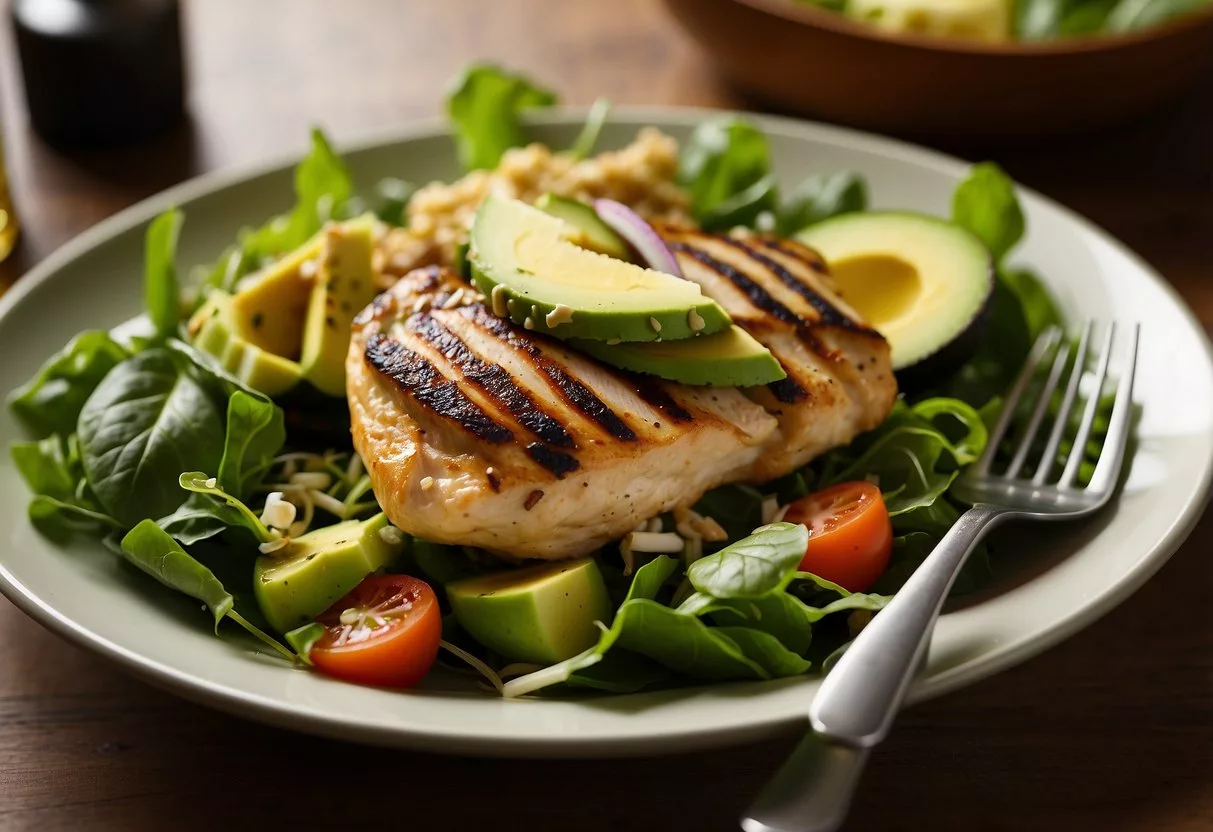
Grilled chicken salad with avocado is a delicious and nutritious option for people with insulin resistance. The recipe is easy to make and can be prepared in just a few minutes.
To make this salad, start by grilling chicken breasts until they are cooked through. While the chicken is cooking, prepare the salad greens and vegetables.
Once the chicken is done, let it cool for a few minutes before slicing it into thin strips. Then, arrange the chicken and vegetables on top of the greens.
The avocado dressing is what really sets this salad apart. To make it, blend together avocado, vinegar, oil, coriander, and yogurt until smooth. Drizzle the dressing over the salad and toss gently until everything is well coated.
This grilled chicken salad with avocado is a great option for people with insulin resistance. It is low in carbohydrates and high in healthy fats.
The avocado provides a good source of monounsaturated fats, which can help improve insulin sensitivity. Plus, the chicken is a good source of protein, which can help keep you feeling full and satisfied throughout the day.
2. Quinoa and Black Bean Bowl
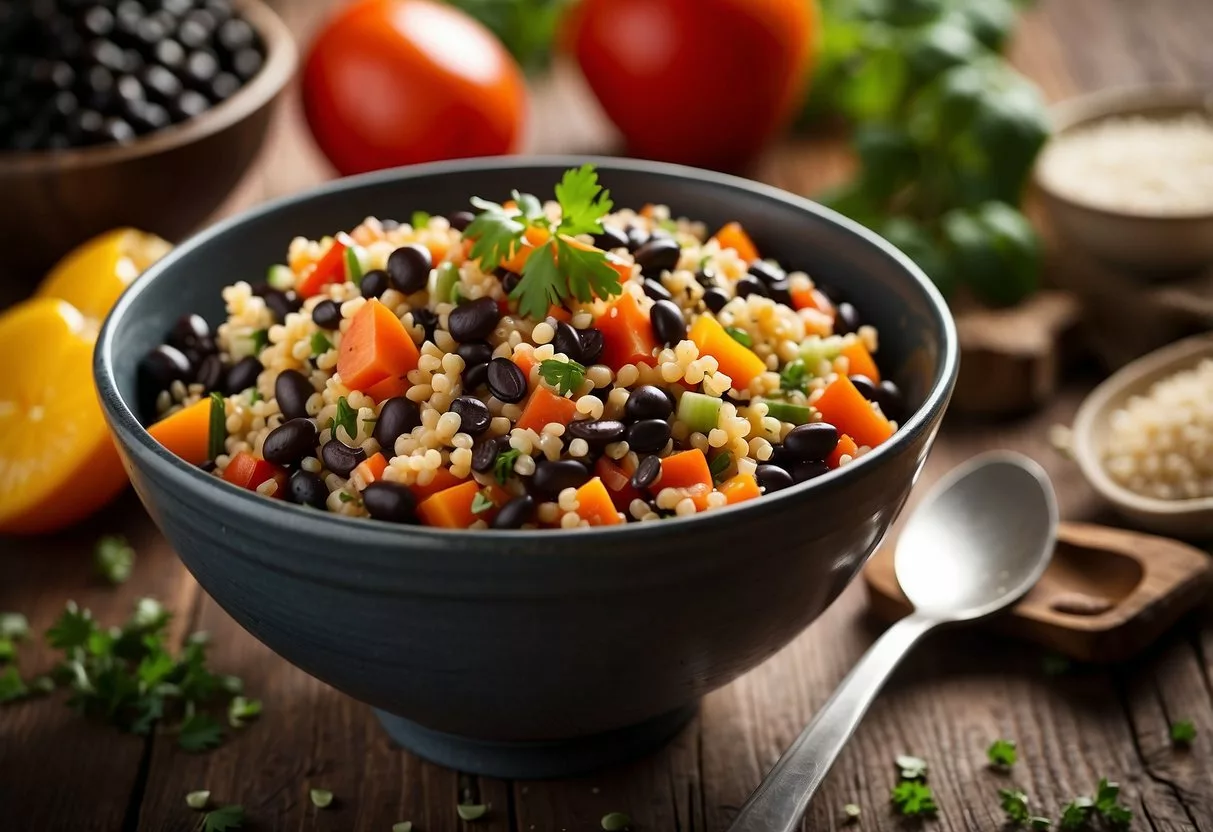
Quinoa and black bean bowls are an excellent lunch option for people with insulin resistance. This recipe is high in fiber, protein, and healthy fats, which can help regulate blood sugar levels and keep you feeling full for longer.
To make this dish, combine cooked quinoa and black beans in a bowl. You can also add other ingredients like avocado, tomatoes, and cilantro to add flavor and nutrition. For the dressing, mix hummus and lime juice together and drizzle it over the bowl.
Quinoa is a low-glycemic index grain that is rich in protein and fiber. It can help slow down the absorption of carbohydrates and prevent spikes in blood sugar levels.
Black beans are also a good source of protein and fiber, and they have a low glycemic index as well.
This recipe is easy to prepare and can be customized to your liking. You can add different vegetables, herbs, and spices to make it more flavorful. It’s also a great meal prep option that can be made ahead of time and stored in the fridge for a quick and healthy lunch.
3. Zucchini Noodles with Pesto
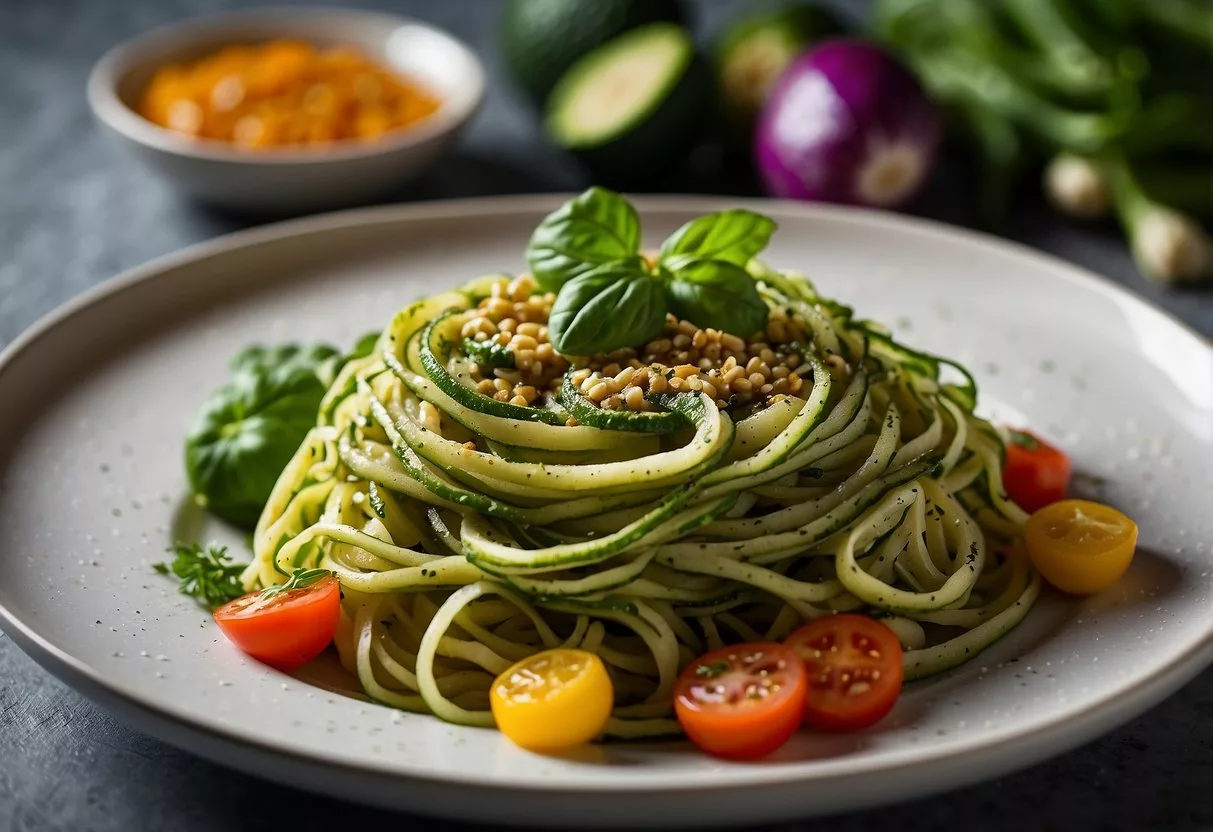
Zucchini noodles with pesto is a delicious and nutritious lunch option for people with insulin resistance. This recipe is low in carbohydrates and high in healthy fats, making it a perfect choice for those who need to manage their blood sugar levels.
To make this dish, start by spiralizing zucchini into noodles. Then, prepare the pesto sauce by blending onion, garlic, basil, toasted pepitas, olive oil, vinegar, and red pepper flakes in a food processor. Season the mixture with salt to taste.
Next, heat the pesto in a large skillet and add the spiralized zucchini noodles and pepper flakes (if desired). Sauté the noodles for 2-4 minutes to heat them through without overcooking. Turn off the heat, add cherry tomatoes, and toss. Serve the pesto zucchini noodles with extra pepper flakes, vegan parmesan cheese, and fresh basil.
Zucchini is a great source of fiber, vitamins, and minerals, including vitamin C, potassium, and magnesium. Pesto sauce, made with healthy fats from olive oil and nuts, provides a good source of monounsaturated fats that can help improve insulin sensitivity.
4. Turkey and Spinach Wrap
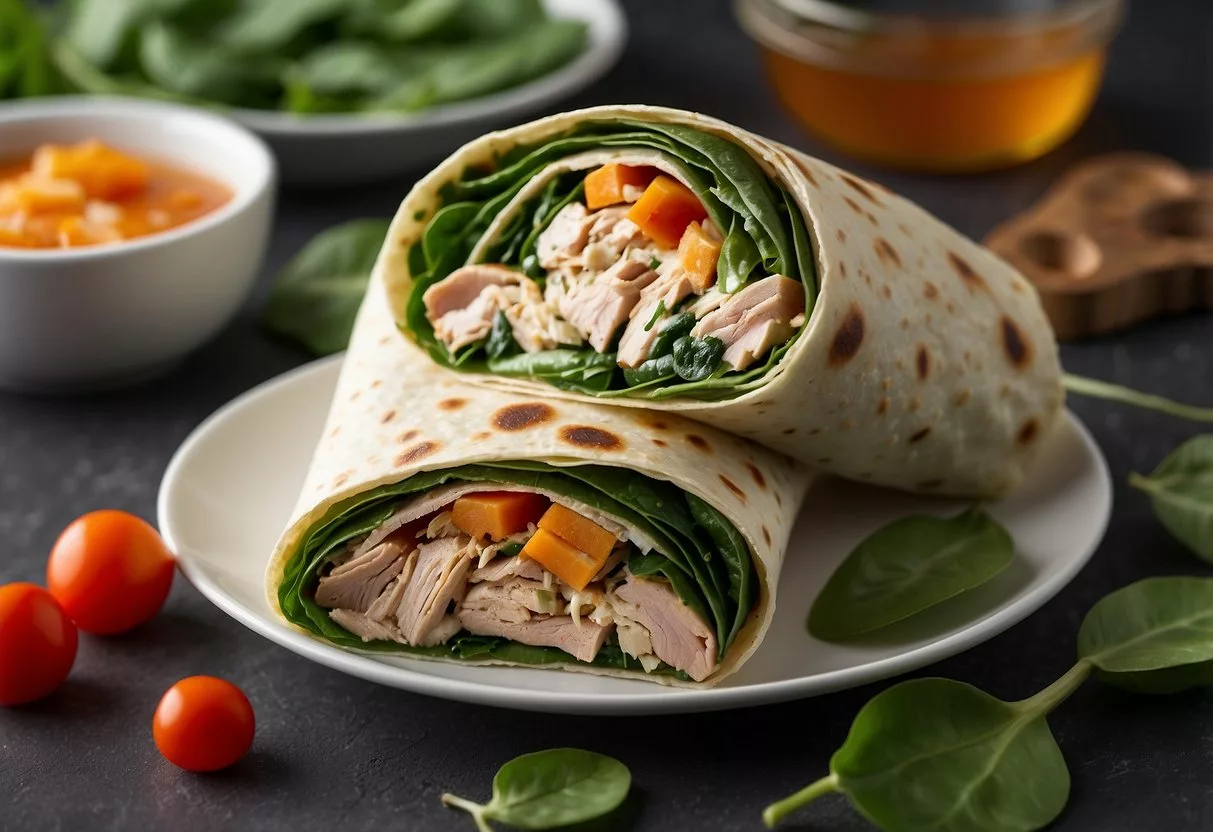
A turkey and spinach wrap is a perfect lunch recipe for people with insulin resistance. The turkey provides a good source of protein, while the spinach is rich in vitamins and minerals. This recipe is easy to make and can be prepared in advance, making it a great option for those who have busy schedules.
To make this wrap, start by heating a whole-wheat tortilla in a skillet. Then, layer on some turkey breast, fresh spinach leaves, and sliced avocado. Top it off with a drizzle of olive oil and a sprinkle of black pepper. Roll up the tortilla and enjoy!
This recipe is not only delicious but also nutritious. Turkey is a lean protein that can help regulate blood sugar levels, while spinach is a low-carbohydrate vegetable that is rich in fiber, vitamins, and minerals. The healthy fats from the avocado and olive oil also make this wrap a well-rounded meal.
5. Baked Salmon with Asparagus
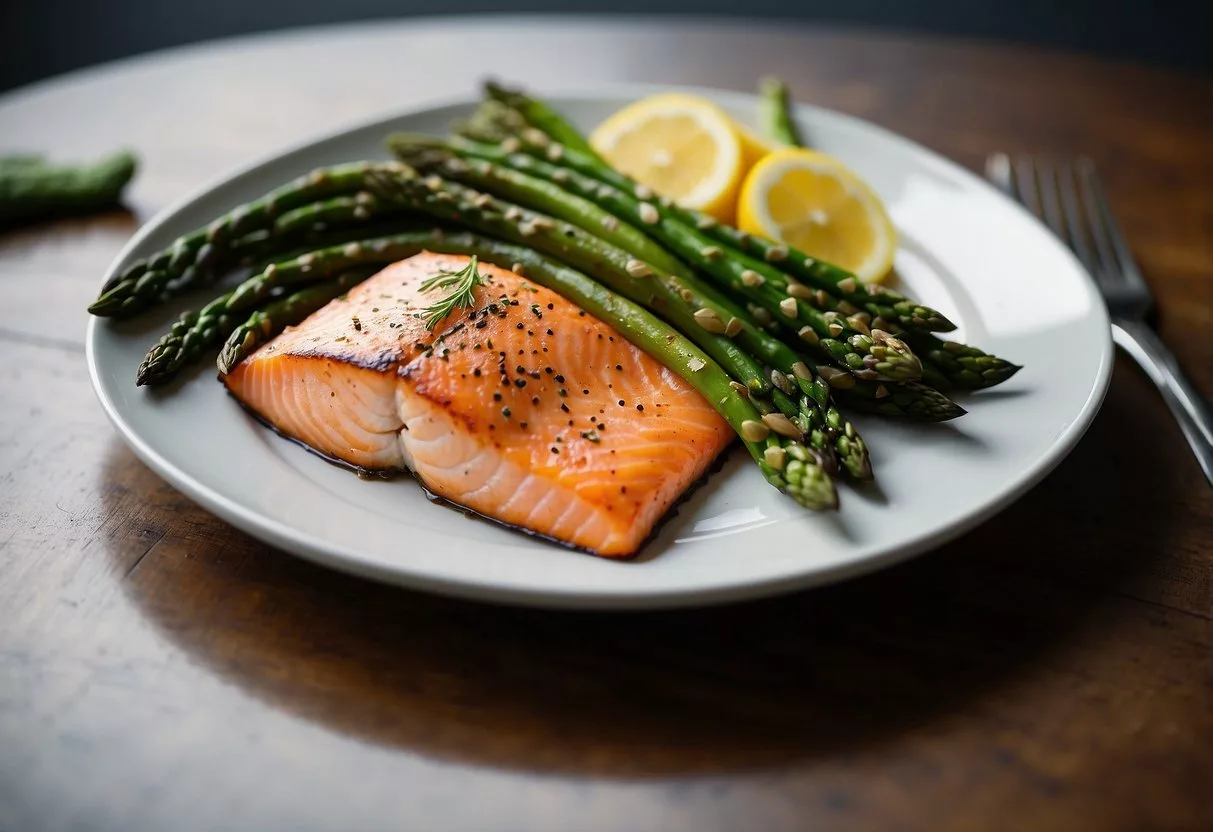
Salmon is a great source of protein and omega-3 fatty acids, making it a great option for those with insulin resistance. This recipe for baked salmon with asparagus is easy to make and packed with flavor.
To make this dish, preheat the oven to 425 degrees F and line a sheet pan with parchment paper. In a mixing bowl, whisk together maple syrup, tamari, vinegar, garlic, and ginger until smooth. Place the salmon on the sheet pan and cover with half the teriyaki marinade. Add asparagus to the pan and drizzle with olive oil, salt, and pepper. Bake for 12-15 minutes or until the salmon is cooked through and the asparagus is tender.
This recipe is not only delicious but also healthy. Salmon is rich in omega-3 fatty acids, which have anti-inflammatory properties and can help reduce the risk of heart disease. Asparagus is a good source of fiber, folate, and vitamins A, C, and K. This dish is also low in carbohydrates, making it a great option for those with insulin resistance.
6. Chickpea and Veggie Stir-Fry
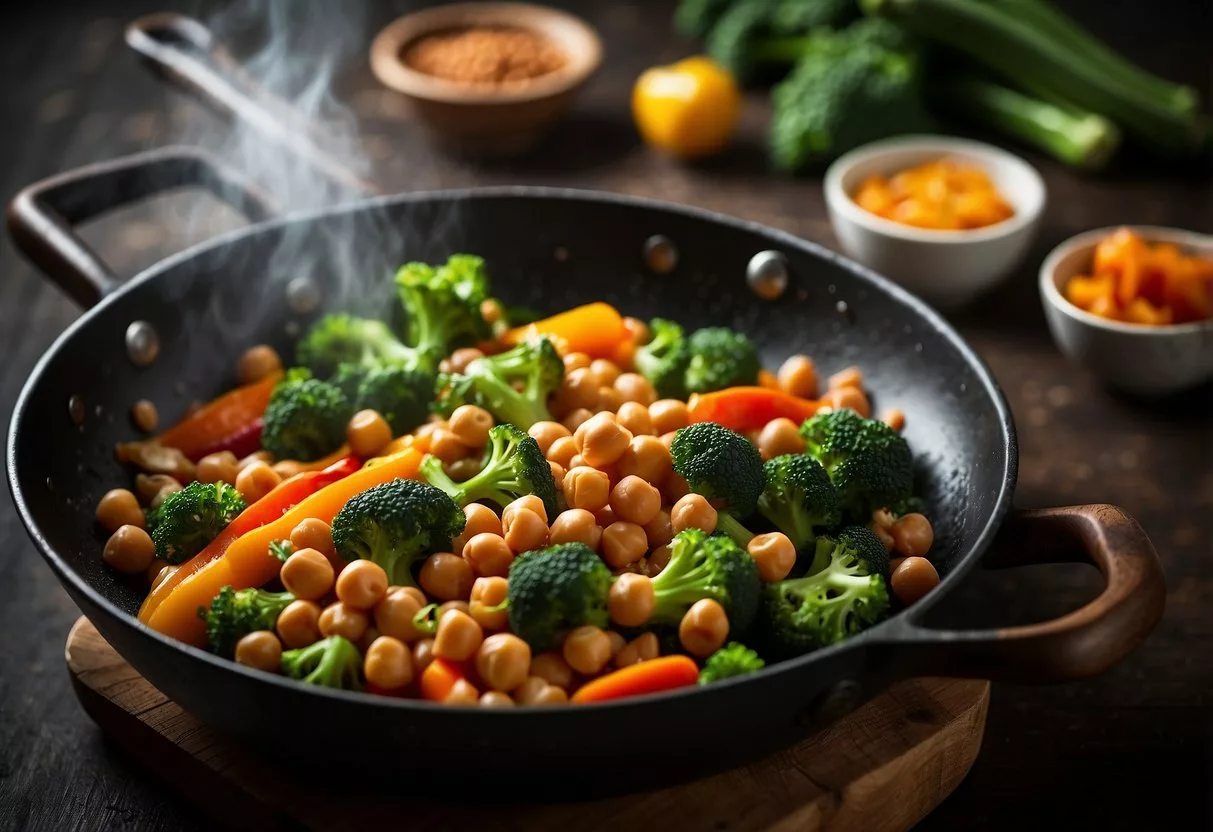
Chickpea and veggie stir-fry is a delicious and nutritious dish that is perfect for people with insulin resistance. This recipe is packed with fiber and protein, making it a great option for those looking to manage their blood sugar levels.
To make this recipe, you will need chickpeas, assorted vegetables such as broccoli, carrots, mushrooms, peas, and peppers, and a few other ingredients like soy sauce, garlic, and ginger. The vegetables are stir-fried in a wok or large frying pan and then combined with the chickpeas and sauce.
7. Greek Yogurt with Berries and Nuts
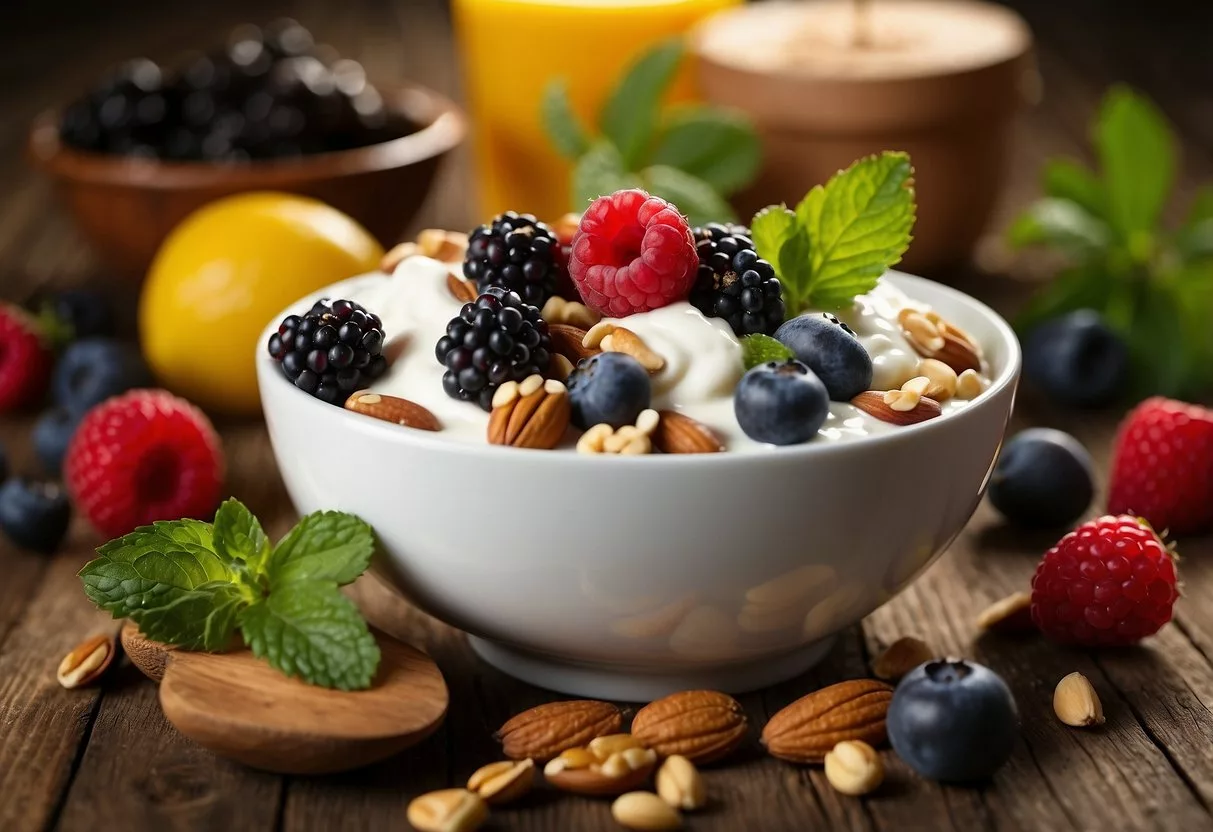
Greek yogurt with berries and nuts is a delicious and nutritious option for people with insulin resistance. Greek yogurt is high in protein and low in carbohydrates, making it a great choice for those looking to manage their blood sugar levels.
Berries are also a great choice for people with insulin resistance as they are low in sugar and high in fiber. Adding nuts to the mix provides healthy fats and additional protein.
To make this dish, simply combine Greek yogurt with your favorite berries and a handful of nuts. Drizzle with honey for added sweetness if desired.
This dish is versatile and can be customized to your liking. Try adding different types of nuts or swapping out the berries for different fruits.
One recipe variation is to use frozen berries instead of fresh. Simply thaw the berries before adding them to the yogurt. This can be a great option for those who want to enjoy this dish year-round, even when fresh berries are out of season.
8. Cauliflower Rice with Tofu

Cauliflower rice is a great low-carb alternative to regular rice, and it’s perfect for people with insulin resistance. This recipe also includes tofu, which is a great source of plant-based protein.
To make this dish, start by heating up some oil in a pan and sautéing some garlic and onion until they are fragrant.
Then, add in some diced tofu and cook until it’s browned on all sides.
Next, add in some riced cauliflower and cook until it’s tender. Finally, season the dish with some soy sauce and sesame oil for added flavor.
This meal is not only delicious, but it’s also packed with nutrients. Cauliflower is a great source of fiber, which can help regulate blood sugar levels, while tofu is rich in protein and low in carbohydrates.
Plus, this dish is easy to make and can be customized with your favorite vegetables or seasonings.
9. Lentil Soup with Kale
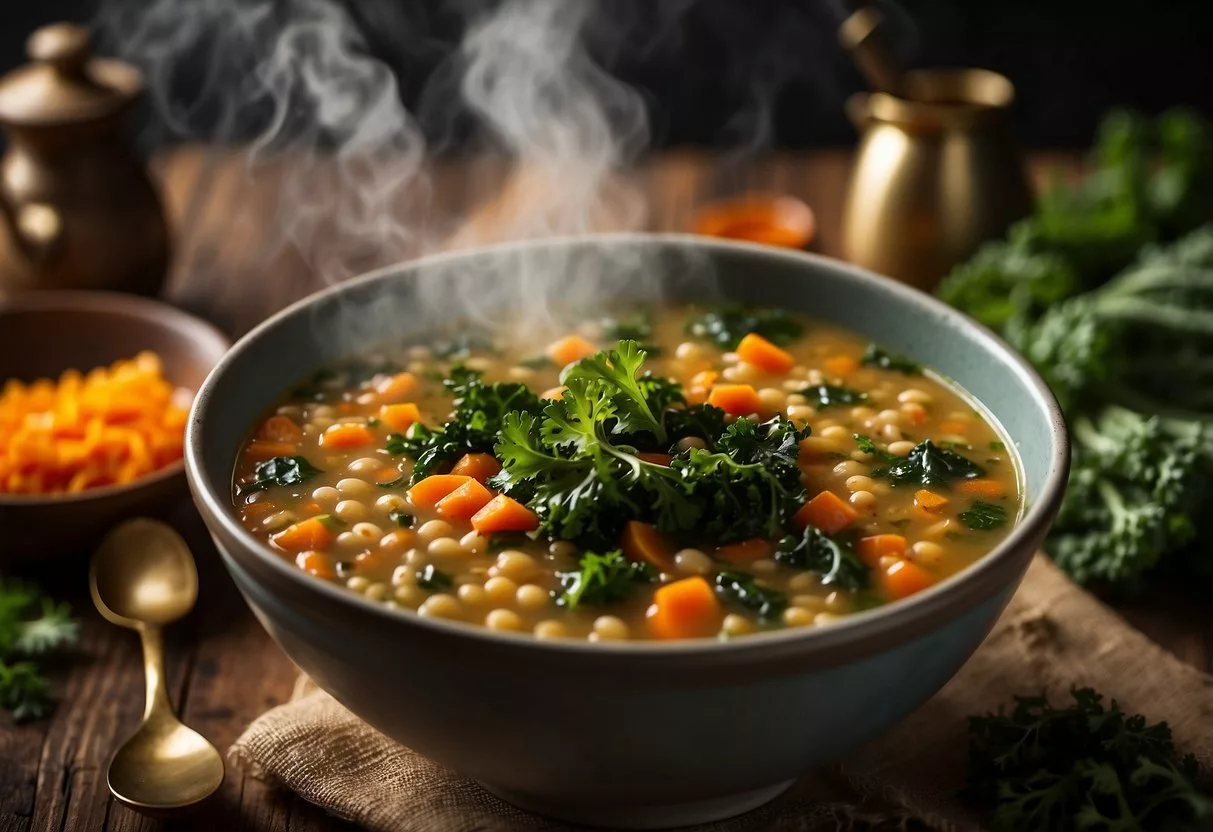
Lentil soup with kale is a hearty and healthy meal that is perfect for people with insulin resistance. This recipe is easy to make and packed with nutrients that can help regulate blood sugar levels.
To make this soup, start by sautéing onions and celery in olive oil until they are softened.
Then, add minced garlic, cumin, paprika, Italian seasoning, salt, and pepper to taste.
Add red lentils and water, and let the mixture simmer until the lentils are cooked and softened.
Finally, add chopped kale to the soup and continue to cook for a few more minutes until the kale is tender. Serve hot and enjoy!
10. Eggplant Parmesan
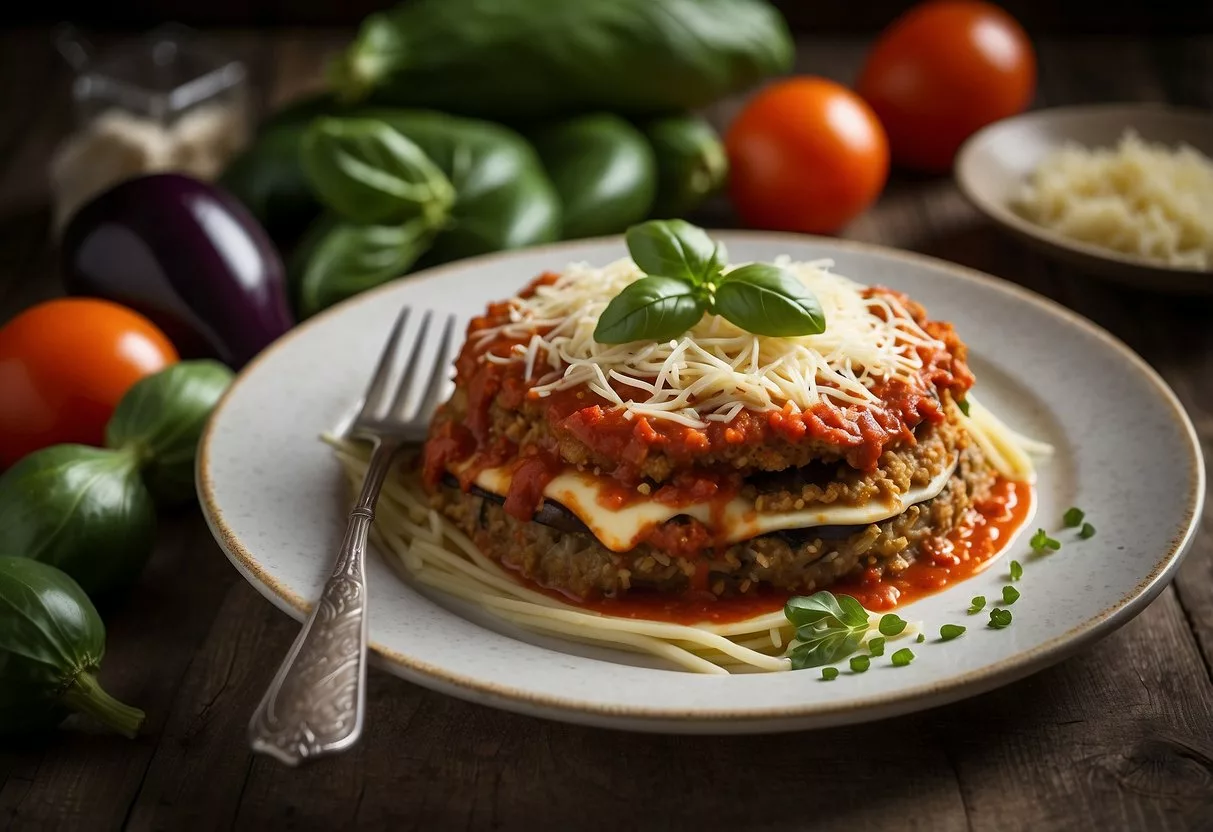
Eggplant Parmesan is a delicious and nutritious lunch option for people with insulin resistance. This Italian dish is made by layering eggplant slices with tomato sauce, mozzarella cheese, and Parmesan cheese. The eggplant serves as a low-carbohydrate and low-glycemic index substitute for pasta.
To make eggplant parmesan, first, slice the eggplant into rounds and season with salt. This will help remove excess moisture and bitterness from the eggplant.
Next, bread the eggplant slices in flour, eggs, and breadcrumbs. Bake the eggplant in the oven until crispy and golden brown.
Then, layer the eggplant slices with tomato sauce, mozzarella cheese, and Parmesan cheese, and bake until the cheese is melted and bubbly.
Eggplant is a good source of fiber, potassium, and antioxidants, which can help improve insulin sensitivity and reduce inflammation in the body. The tomato sauce provides lycopene, another powerful antioxidant that can help protect against diabetes and heart disease.
11. Mushroom and Spinach Omelet
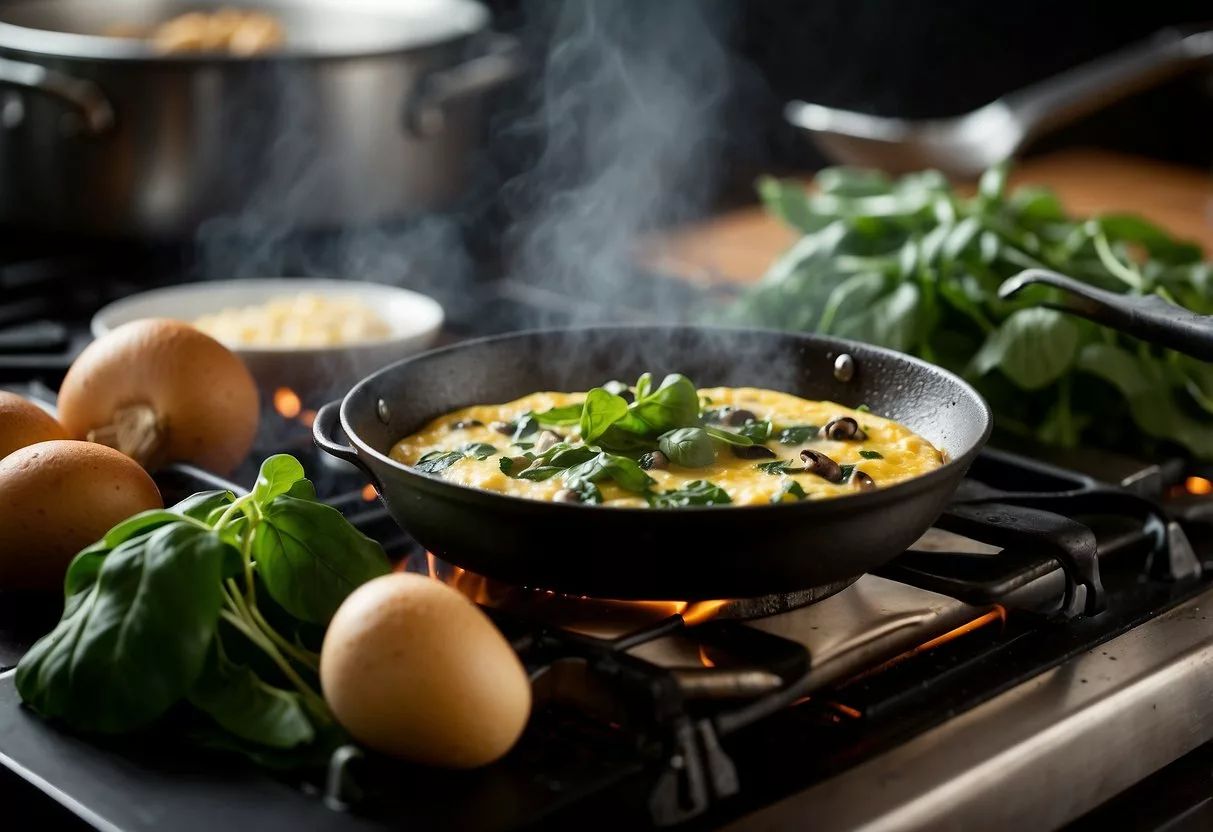
A mushroom and spinach omelette is a delicious and nutritious lunch option for those with insulin resistance. This meal is low in carbohydrates and high in protein, making it an ideal choice for regulating blood sugar levels.
To make this omelet, start by heating olive oil in a non-stick skillet over medium heat.
Add mushrooms and onions to the skillet and cook until softened.
Then, add spinach to the skillet and cook until wilted.
In a small bowl, whisk together the eggs and a pinch of salt and pepper. Pour the egg mixture into the skillet and cook until the eggs are set. Fold the omelet in half and serve.
This omelet is not only easy to make, but it is also versatile. You can add other vegetables such as bell peppers or tomatoes to the mix to increase the nutritional value of the meal.
Additionally, you can pair this omelet with a side salad or a slice of whole-grain bread to make it a more filling meal.
12. Tuna Salad with Olive Oil Dressing
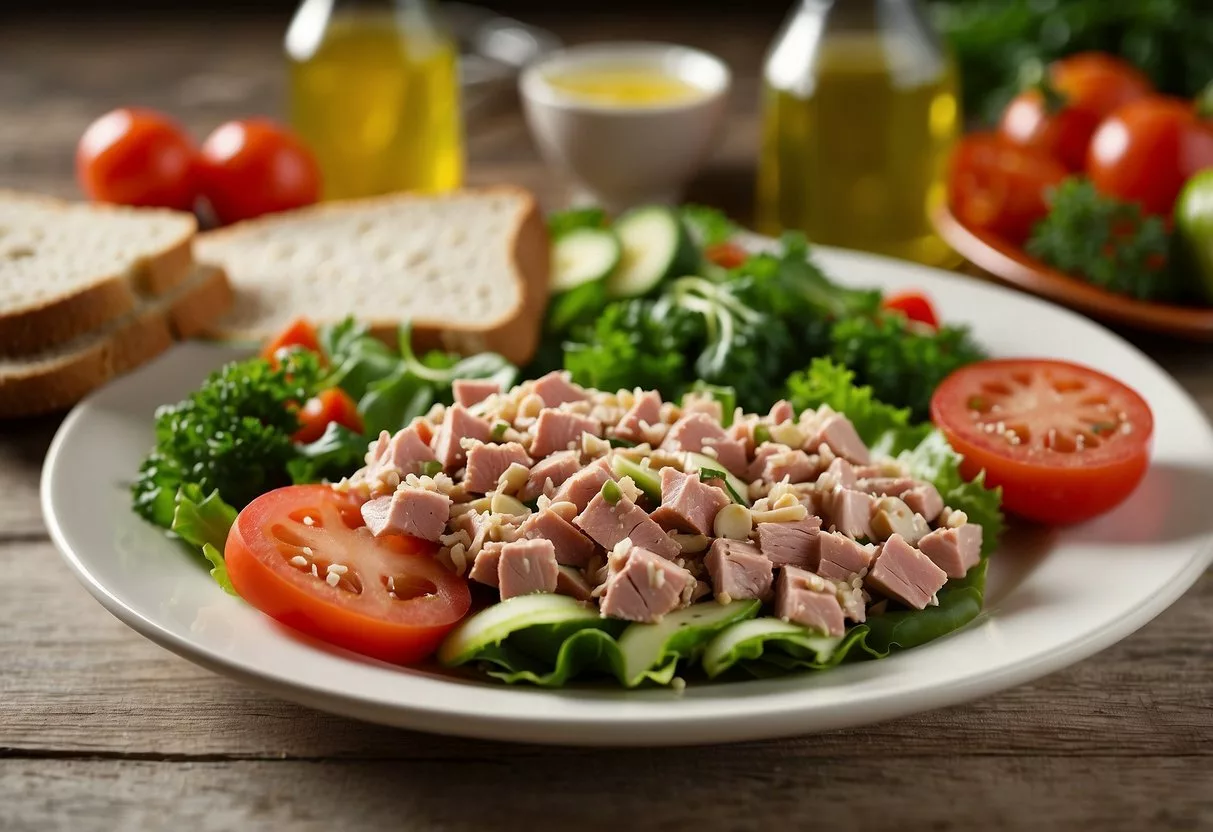
Tuna salad is a classic lunch option that is both delicious and nutritious. For people with insulin resistance, it’s important to choose a recipe that is low in carbohydrates and high in healthy fats. This tuna salad with olive oil dressing fits the bill perfectly.
To make this salad, simply combine canned tuna with chopped vegetables such as celery, red onion, and bell pepper.
Add in some chickpeas and black olives for extra fiber and flavor. Then, whisk together a simple dressing of olive oil, lemon juice, and herbs such as basil and oregano.
The result is a flavorful and filling salad that is perfect for a quick and easy lunch. Plus, the healthy fats from olive oil and tuna will help keep you feeling satisfied and full for hours.
13. Stuffed Bell Peppers with Ground Turkey
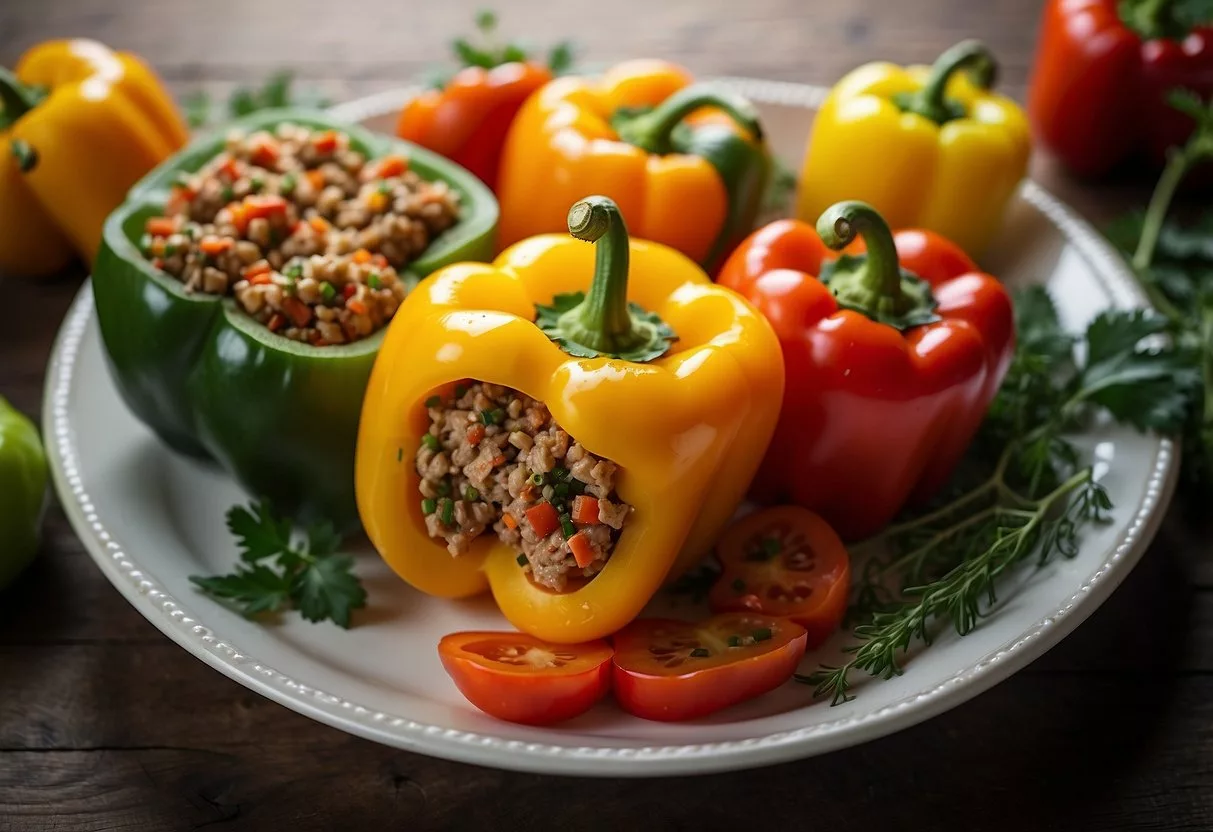
Stuffed bell peppers with ground turkey is a delicious and healthy lunch option for people with insulin resistance. This recipe is high in protein, low in carbohydrates, and packed with nutrients.
To make this dish, the bell peppers are stuffed with a mixture of ground turkey, rice, and tomato sauce.
The filling is seasoned with garlic, cumin, Italian seasoning, salt, and pepper, which gives it a rich and savory flavor.
The peppers are then baked until tender and topped with cheese.
This recipe is easy to prepare and can be customized to suit personal preferences.
For example, brown rice can be substituted with quinoa or cauliflower rice for a lower-carb option.
Additionally, the cheese can be swapped with a dairy-free alternative for those who are lactose intolerant.
14. Cottage Cheese with Pineapple
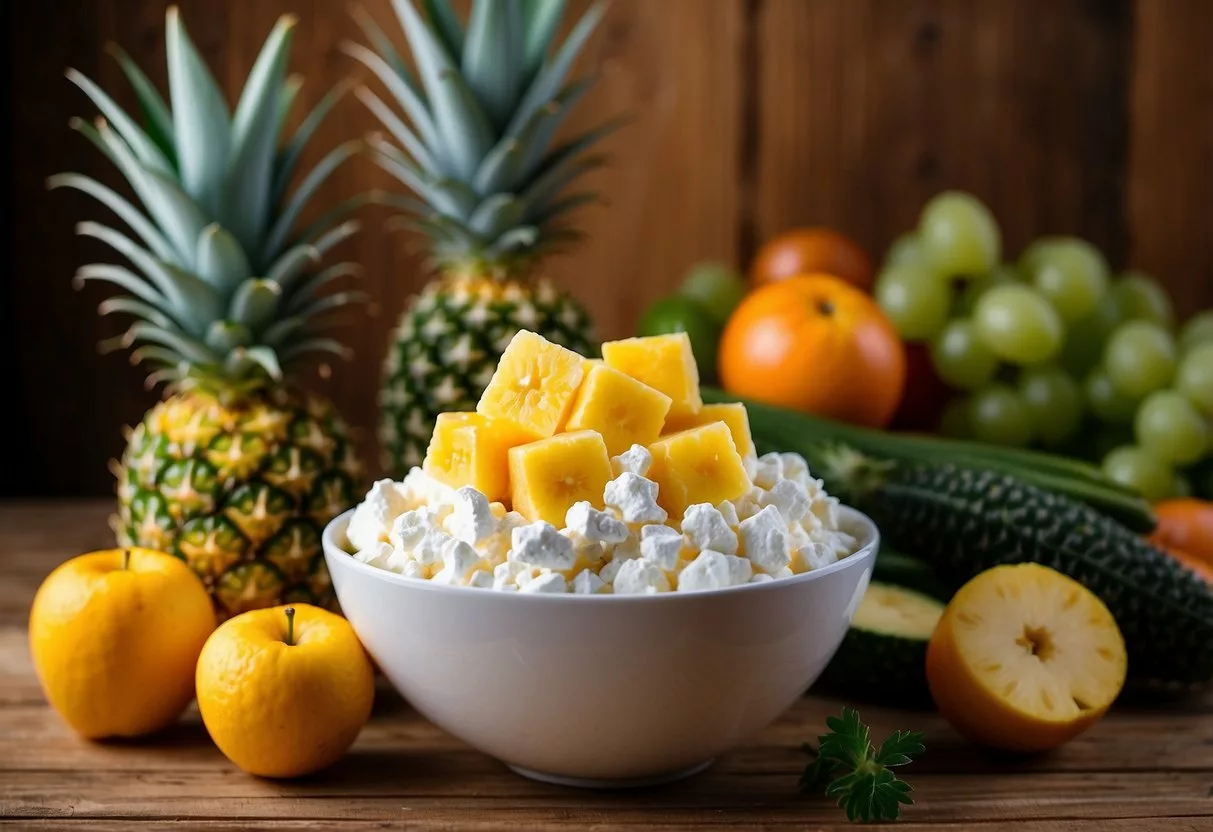
Cottage cheese with pineapple is a delicious and nutritious lunch option for people with insulin resistance. Cottage cheese is a low-fat, high-protein food that can help regulate blood sugar levels.
Pineapple is a great source of fiber, which can also help control blood sugar levels.
To make this lunch, simply combine a half cup of cottage cheese with a half cup of diced pineapple.
For an added crunch, sprinkle a tablespoon of chopped walnuts on top.
This lunch is easy to prepare and can be packed in a lunchbox for work or school.
It’s important to note that people with insulin resistance should be mindful of portion sizes, as consuming too much fruit can lead to spikes in blood sugar levels.
However, pineapple is a great fruit option for people with insulin resistance, as it has a low glycemic index and contains enzymes that can aid in digestion.
15. Chicken and Broccoli Stir-Fry
Chicken and broccoli stir-fry is a classic dish that is easy to make and perfect for people with insulin resistance. This recipe is packed with protein and fiber, making it a filling and satisfying lunch option.
To make this dish, start by marinating chicken strips in a mixture of soy sauce, ginger, lime juice, and sesame oil for at least an hour or up to 24 hours.
Then, heat a large wok or nonstick skillet over medium-high heat and add some oil.
Once the oil is hot, add the marinated chicken and stir-fry until it is cooked through. Remove the chicken from the skillet and set it aside.
Next, add some broccoli florets and bell pepper to the skillet and sauté them briefly.
Then, add a cornstarch mixture to the skillet and allow it to thicken briefly before adding the cooked chicken back in.
Bring the mixture to a simmer and stir for about 6 to 7 minutes until everything is heated through and the sauce has thickened.
This chicken and broccoli stir-fry recipe is not only delicious but also healthy and diabetes-friendly. It is a great way to incorporate more vegetables into your diet while still enjoying a flavorful and satisfying meal.
Understanding Insulin Resistance
What Is Insulin Resistance?
Insulin resistance is a condition in which the body’s cells become resistant to the hormone insulin. Insulin is produced by the pancreas and helps regulate blood sugar levels in the body.
When a person has insulin resistance, their cells do not respond properly to insulin, which can lead to high blood sugar levels. Over time, this can cause damage to the body’s organs and tissues.
Insulin resistance is often a precursor to type 2 diabetes, a chronic condition in which the body cannot produce or use insulin effectively. However, not everyone with insulin resistance will develop diabetes. In fact, many people with insulin resistance can manage their condition through lifestyle changes such as diet and exercise.
Causes and Risk Factors
Insulin resistance can be caused by a variety of factors, including genetics, obesity, and a sedentary lifestyle. Some people may also develop insulin resistance as a side effect of certain medications or medical conditions such as polycystic ovary syndrome (PCOS).
There are several risk factors that can increase a person’s chances of developing insulin resistance. These include:
- Age: Insulin resistance becomes more common as people get older.
- Family history: People with a family history of diabetes or insulin resistance are more likely to develop the condition themselves.
- Obesity: Being overweight or obese can increase a person’s risk of developing insulin resistance.
- Sedentary lifestyle: People who are physically inactive are more likely to develop insulin resistance.
- Other medical conditions: Certain medical conditions such as PCOS, sleep apnea, and hypertension can increase a person’s risk of developing insulin resistance.
Nutritional Guidelines for Insulin Resistance
Insulin resistance is a metabolic condition that affects the body’s ability to use insulin effectively. It can lead to high blood sugar levels, which can increase the risk of developing type 2 diabetes, heart disease, and other health problems.
While there is no cure for insulin resistance, making dietary changes can help manage the condition.
Macronutrient Balance
Maintaining a balanced macronutrient intake is essential for people with insulin resistance.
A balanced diet should include a combination of carbohydrates, protein, and healthy fats. However, the proportion of each macronutrient may vary depending on the individual’s needs.
Carbohydrates are an essential macronutrient, but people with insulin resistance should be mindful of the type and amount of carbohydrates they consume.
High glycemic index (GI) carbohydrates, such as refined grains and sugars, can cause a rapid increase in blood sugar levels. Therefore, it is recommended to choose low GI carbohydrates, such as whole grains, legumes, fruits, and vegetables.
Protein is essential for maintaining muscle mass and promoting satiety. It is recommended to include lean protein sources such as poultry, fish, tofu, and legumes in the diet.
Healthy fats, such as monounsaturated and polyunsaturated fats, are essential for maintaining healthy cholesterol levels and promoting satiety.
Sources of healthy fats include nuts, seeds, avocado, olive oil, and fatty fish.
Glycemic Index and Load
The glycemic index (GI) is a measure of how quickly carbohydrates in food raise blood sugar levels.
Foods with a high GI value can cause a rapid increase in blood sugar levels, while foods with a low GI value cause a slower and more gradual increase.
The glycemic load (GL) takes into account both the GI value and the amount of carbohydrates in a serving of food.
Foods with a high GL value can cause a rapid increase in blood sugar levels, even if they have a low GI value.
People with insulin resistance should aim to consume low GI and GL foods to help manage blood sugar levels. Some examples of low GI and GL foods include whole grains, legumes, non-starchy vegetables, and most fruits.
Importance of Fiber
Fiber is a type of carbohydrate that the body cannot digest. It helps regulate blood sugar levels, promotes satiety, and supports digestive health.
People with insulin resistance should aim to consume at least 25 grams of fiber per day.
Fiber-rich foods include fruits, vegetables, whole grains, legumes, nuts, and seeds. It is recommended to choose whole food sources of fiber over supplements.
Meal Planning Tips
Portion Control Strategies
When planning meals for people with insulin resistance, it’s important to consider portion sizes.
Overeating can lead to weight gain and a higher risk of insulin resistance.
One strategy for portion control is to use smaller plates and bowls, which can help make portions look more substantial.
Another strategy is to divide the plate into sections, with half the plate filled with non-starchy vegetables, a quarter with lean protein, and a quarter with healthy carbohydrates like whole grains or legumes.
Incorporating Healthy Fats
Incorporating healthy fats into meals can help people with insulin resistance feel fuller for longer and keep blood sugar levels stable.
Some healthy fats include avocados, nuts, seeds, olive oil, and fatty fish like salmon or tuna.
Adding a small amount of healthy fat to a meal can also help the body absorb important nutrients like vitamins A, D, E, and K.
Frequently Asked Questions
What are some diabetic-friendly lunch options for the workplace?
For someone with insulin resistance, it is important to choose lunch options that are low in carbohydrates and high in protein and fiber.
Some diabetic-friendly lunch options for the workplace include grilled chicken salad with avocado, quinoa and black bean bowl, zucchini noodles with pesto, turkey and spinach wrap, and baked salmon with asparagus.
These lunch options are not only delicious but also nutritious, providing the necessary nutrients to manage insulin resistance.
How can I prepare a quick and healthy lunch for insulin resistance?
Preparing a quick and healthy lunch for insulin resistance can be challenging, but it is possible.
One option is to prep meals on the weekends and prepare lunch for the week ahead. This can save time and ensure that you have healthy lunch options available.
Another option is to choose recipes that are quick and easy to prepare, such as salads, wraps, and bowls.
For example, the grilled chicken salad with avocado can be prepared in under 30 minutes and is a great option for a quick and healthy lunch.
Which low-carb recipes are recommended for managing insulin resistance?
Low-carb recipes are recommended for managing insulin resistance because they can help stabilize blood sugar levels.
Some low-carb recipes that are recommended for managing insulin resistance include zucchini noodles with pesto, quinoa and black bean bowl, turkey and spinach wrap, and baked salmon with asparagus.
These recipes are not only low in carbohydrates but also high in protein and fiber, making them a great choice for managing insulin resistance.
Are there vegetarian lunch options suitable for someone with insulin resistance?
Yes, there are many vegetarian lunch options that are suitable for someone with insulin resistance.
Some vegetarian lunch options include lentil soup, roasted vegetable wrap, quinoa salad with chickpeas, and tofu stir-fry.
These lunch options are high in protein and fiber and low in carbohydrates, making them a great choice for someone with insulin resistance.
What are some insulin resistance lunch ideas that can aid in weight loss?
For someone with insulin resistance who is looking to lose weight, it is important to choose lunch options that are low in calories and high in nutrients.
Some insulin resistance lunch ideas that can aid in weight loss include grilled chicken salad with avocado, quinoa and black bean bowl, zucchini noodles with pesto, turkey and spinach wrap, and baked salmon with asparagus.
These lunch options are not only low in calories but also high in protein and fiber, making them a great choice for weight loss.
How can I incorporate PCOS-friendly meals into my lunch routine for insulin resistance?
For someone with insulin resistance and PCOS, it’s important to choose lunch options that are low in carbohydrates and high in protein and fiber.
Some PCOS-friendly lunch options include:
- grilled chicken salad with avocado
- quinoa and black bean bowl
- zucchini noodles with pesto
- turkey and spinach wrap
- baked salmon with asparagus
These lunch options are not only PCOS-friendly but also nutritious, providing the necessary nutrients to manage insulin resistance and PCOS.
References
- Sugar Defender. https://8e81c8fyct2y4n4c8aiki8qmct.hop.clickbank.net/?tid=lunch1 Accessed November 8, 2025
- Sugar Defender. https://8e81c8fyct2y4n4c8aiki8qmct.hop.clickbank.net/?tid=lunch2 Accessed November 8, 2025
- Sugar Defender. https://8e81c8fyct2y4n4c8aiki8qmct.hop.clickbank.net/?tid=lunch3 Accessed November 8, 2025
